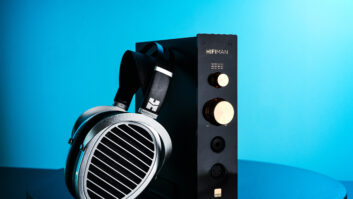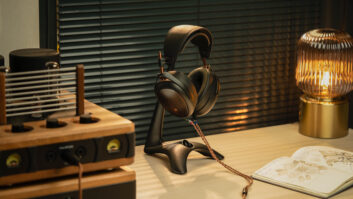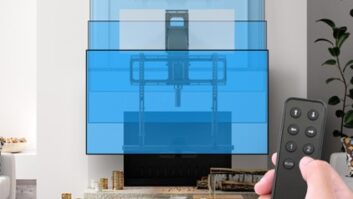Sales of headphone MP3 players will pass another milestone in 2005, when full-year headphone MP3 players will outsell headphone CD players in factory-level units for the first time, according to CEA projections.
Last year, MP3 passed another significant milestone: factory-level dollar sales of headphone MP3 portables exceeded headphone-CD sales for the first time, CEA statistics show. Also in 2004, MP3 portables took the majority share [59.2 percent] of sales in battery-operated music portables, excluding home radios and voice recorders.
More authorized download sites and falling prices have stimulated the unprecedented growth, market research company In-Stat said.
Sean Wargo, CEA’s industry analysis director, agreed that the proliferation of authorized download sites has promoted the category. The sites have made consumers “more comfortable” with downloads in particular and MP3 players in general, he said.
As a result, 2005 will be the first year that compressed-music portables outsell headphone-CD portables in units, Wargo predicted. In 2004, 13 million headphone CDs were sold to retailers, compared to 7 million MP3 portables, but MP3 sell-in will rise more than 43 percent to more than 10 million in 2005 compared to headphone CD’s forecast 9 million, Wargo said.
This year will also mark the second consecutive year that MP3 outsells all other headphone portables in dollars, perhaps exceeding $2 billion in factory-level sales after achieving $860 million during the January-April period, CEA said.
If factory sales hit $2 billion, they will have risen 55 percent compared to full-year 2004 growth of 204 percent.
Some suppliers attribute the slowing growth rate simply to percentage gains being calculated off larger and larger bases, but at least one supplier, Thomson, thinks the market has begun to get saturated.
“A limited number of people manage media on a PC,” and “almost all” such consumers have MP3 portables at this point, said Dan Collishaw, Thomson’s worldwide A/V VP. “We’re seeing some forecasts come down.”
To expand the potential base beyond active computer users, Thomson and Panasonic have introduced five-disc shelf systems that transfer CD music directly to connected MP3 portables bundled with the system.
For the second half, suppliers expect flash-memory models to hold or gain share in units, having fallen behind HDD models for the first time in 2004. Flash will gain in 2005 because of growing capacities that suppliers expect to reach 2GB in the second half, from 1GB in the first half.
Some suppliers also expect spot shortages of HDD models to ease by the fourth quarter as suppliers of drives expand capacity, which has been strained by demand for PVRs and other HDD-equipped devices.
Also in the second half, consumers will find a greater selection of models with color displays to display photos, 1GB flash models falling to $99 from a current $120 to $150, and a greater selection of 6GB HDD models to replace 4GB and 5GB models, marketers said. New HDD models shipped in the past six months have come with a minimum of 4GB, Collishaw noted.
Within the HDD segment, Panasonic’s entertainment group VP Reid Sullivan expects HDD models with capacities of 10GB or more to lose share to 4GB-6GB HDD models and to the growing selection of 1GB flash models. Sullivan sees flash models gaining overall unit share this year as capacities rise and prices drop, although flash will still represent a minority of MP3 sales for the half and full year.
HDD unit sales outpaced flash sales for the first time in 2004, when 67 percent of all compressed-music players sold by suppliers were HDD-based models, CEA statistics show. Because of their higher prices, however, HDD models accounted for 83 percent of compressed-music dollar volume of $1.29 billion, CEA found.
Thomson’s Collishaw expects flash’s share to remain stable in units and dollars in 2005 but grow in future years. He expects the first 2GB flash models to appear as soon as late this year and be more broadly available in 2006.
As flash capacity increases, suppliers of HDD models will respond by adding capacity-intensive applications such as video playback to HDD portables, Sullivan said. Music-focused consumers, however, will opt for ever-increasing flash-memory capacities. “The flash-memory MP3 market will explode when flash hits 4GB,” which stores 1,000 high-bit-rate songs, Sullivan said. He expects 4GB models to appear in 2006, based on the trend for capacity to double every year without a price increase.
Portable Audio Sell-Through
(January-May 2005)













